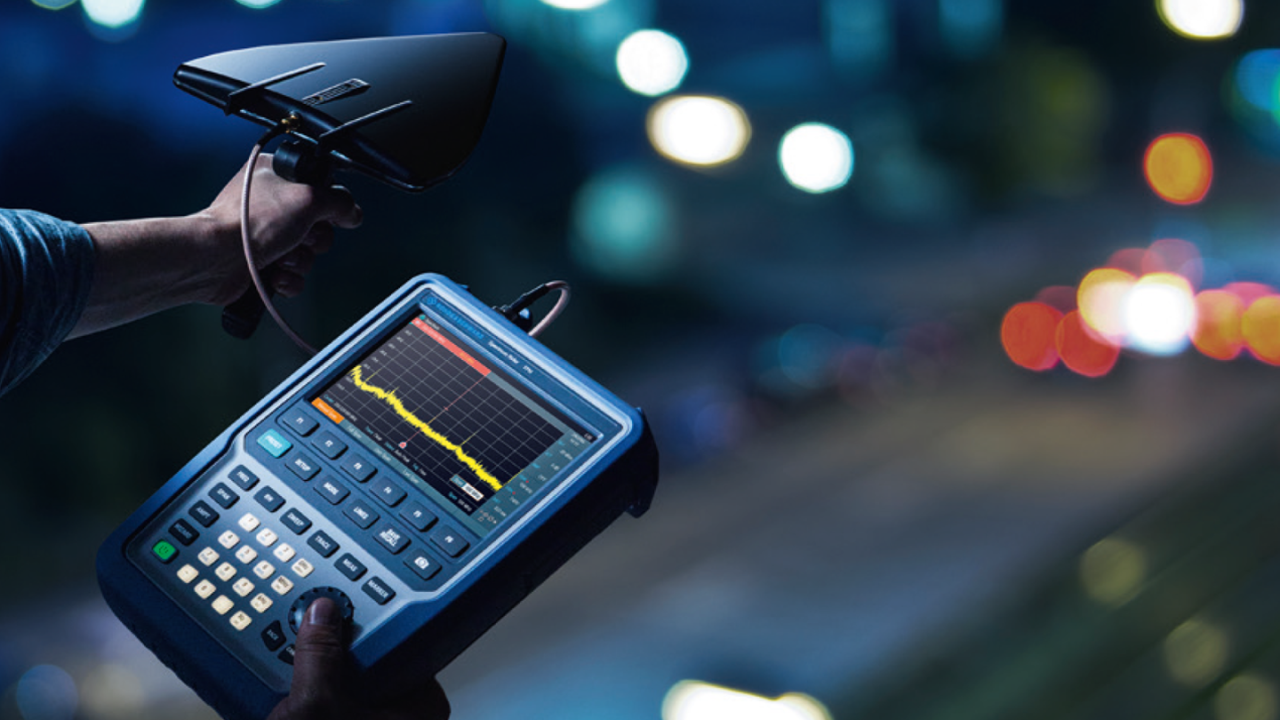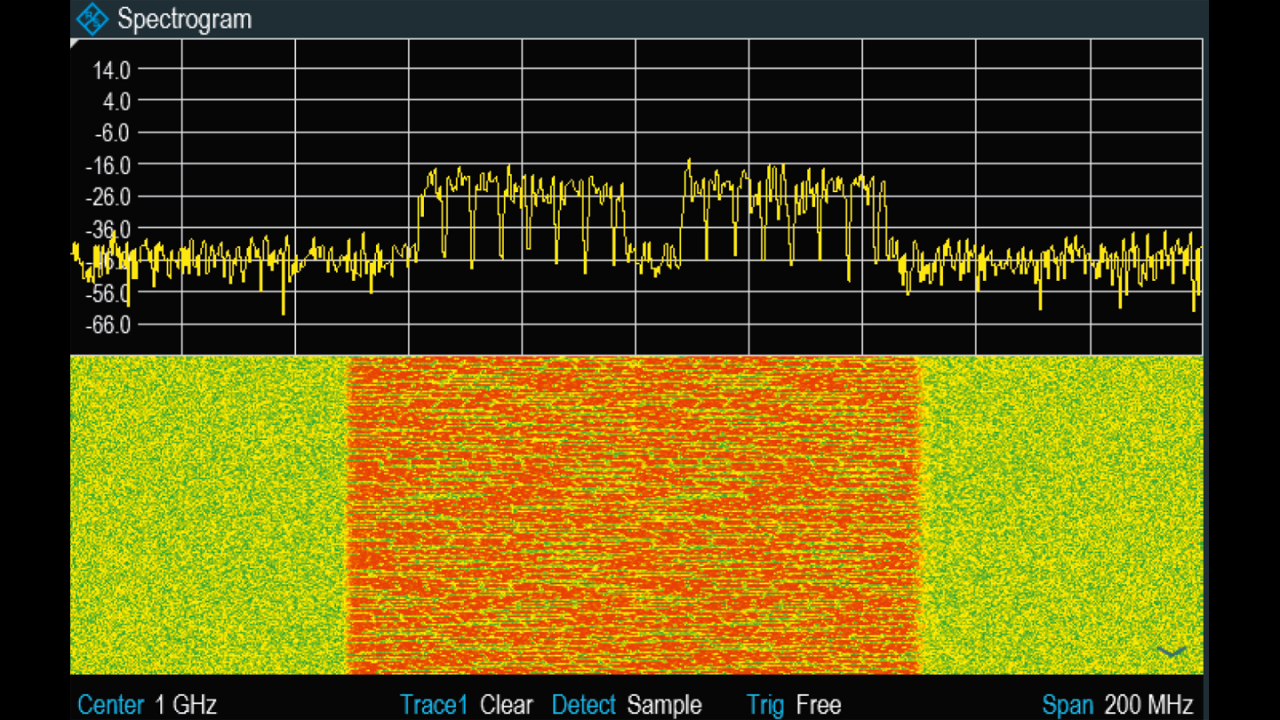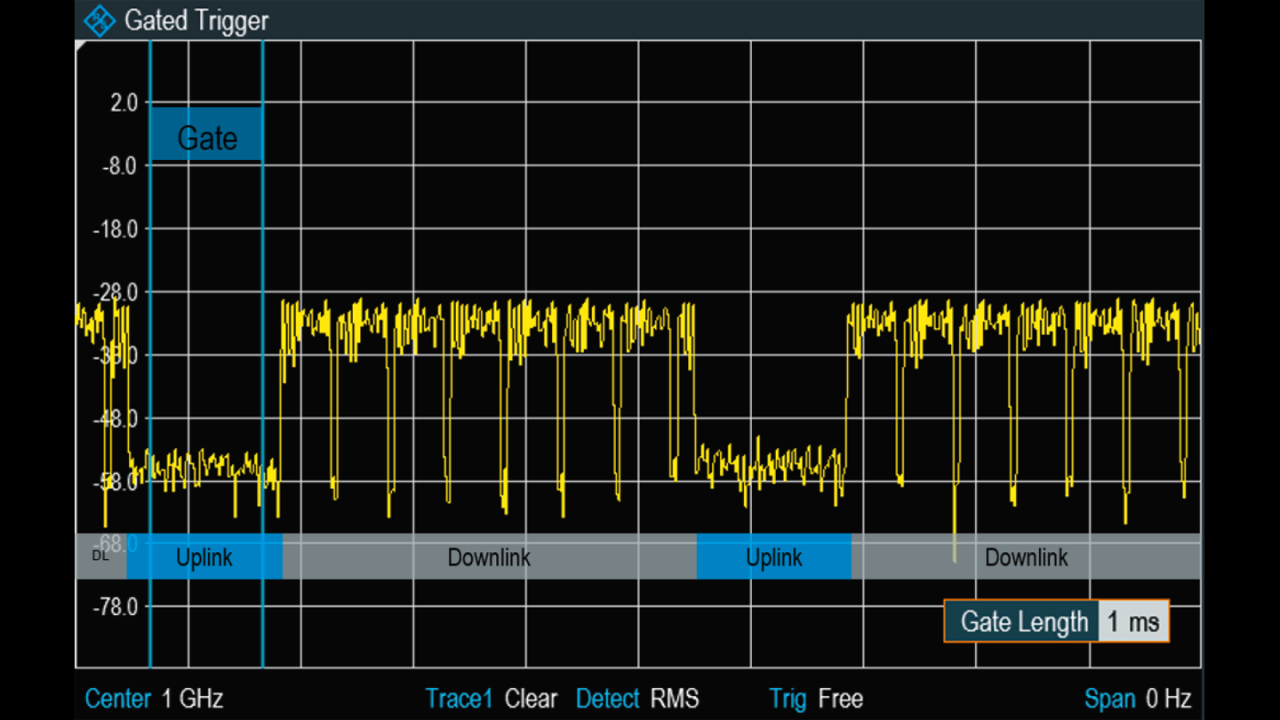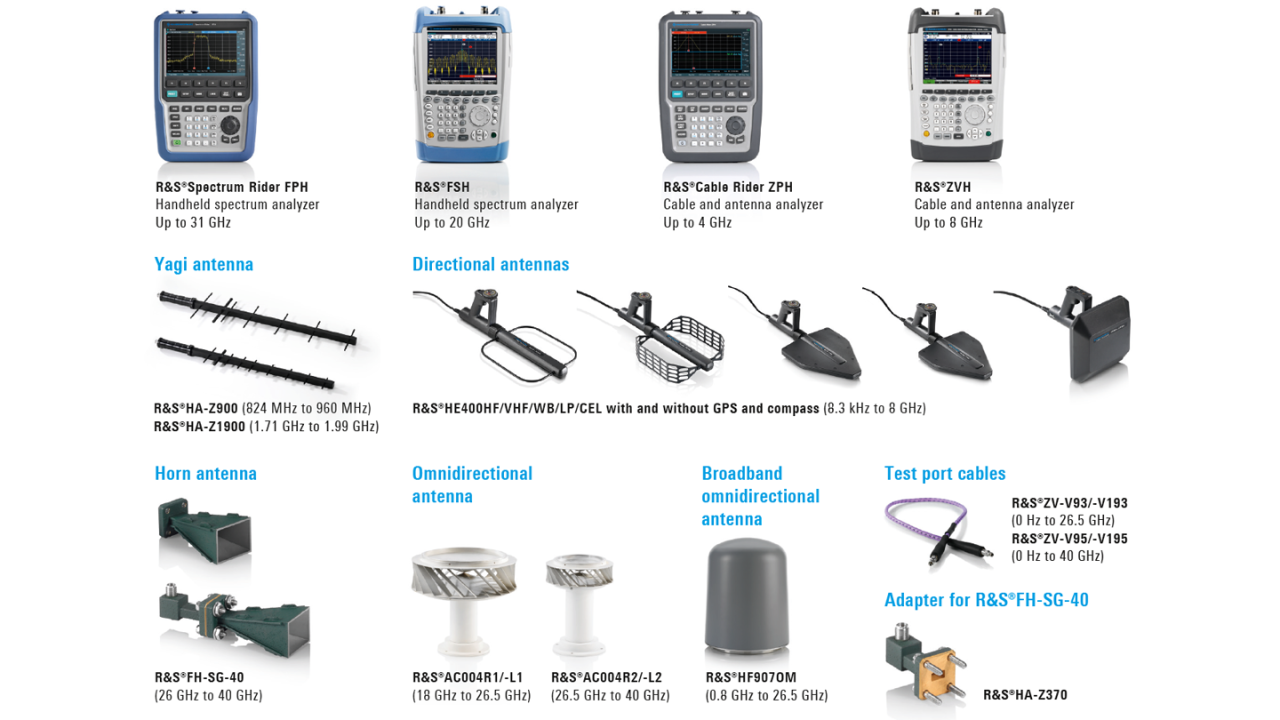

Small factor for a huge gain in performance: the R&S®Spectrum Rider FPH in combination with a directional antenna makes it possible to identify and locate interferers, even in TDD networks
Your task
5G is here, and the first networks are being rolled out. Expectations about high-speed transfer data, ultra-low latency and ultra-high reliability are high. A completely new range of applications and services is waiting to be launched. 5G NR brings another new aspect to the field: it is the first time that time division duplex (TDD) networks will have a global footprint. For many operators, the challenge starts with understanding the implications of managing a TDD network, especially when interferers threaten to decrease performance and reliability.
The communications uplink is more susceptible to interference than the downlink. In FDD networks, it is easy to concentrate on the frequency range allocated to the uplink and, either with a spectrum analyzer or a portable receiver, identify and locate the source of interference.
In TDD networks, the downlink and the uplink use the same frequency, meaning that downlink signals mask the uplink and any other present signals.
Even when the operations center issues an alarm about the presence of an interferer, for the technicians in the field, it is impossible to identify this in conventional spectrum measurements, not to mention locating the interferer.


Spectrum and spectrogram measurements of a 5G NR TDD signal, 100 MHz bandwidth and 30 kHz subcarrier spacing
Rohde & Schwarz solution
Handheld solutions from Rohde & Schwarz, such as the R&S®Spectrum Rider FPH handheld spectrum analyzer, support a gated trigger, enabling users to separate uplink and downlink signals in the time domain.


Zero span mode: TDD slots are visible and a gate can be configured on an uplink slot to trigger the spectrum measurements
Easy separation of uplink and downlink slots
In time-domain measurements (zero span mode), uplink and downlink slots can be visualized. In this mode, the user can configure a window or gate with a specific length. For the application described here, the user configures a gate that falls into an uplink slot.


With the gated trigger active, the R&S®Spectrum Rider FPH measures in uplink slots exclusively, allowing easy recognition of an interferer
The result is a convenient spectrum measurement of uplink signals.
Identifying and locating interferers
The waterfall diagram supported by the R&S®Spectrum Rider FPH facilitates the identification of interference signals. The long-time recording of up to 999 h is practical for identifying sporadic interferers. Signals can be recorded during specific user-configured time windows or for specific signal limits.
In addition, the R&S®Spectrum Rider FPH features a tone function to assist the interference hunting process. With a directional antenna, the user can look for the signal simply by listening to the tone of the instrument. The higher the power of the interferer is, the higher-pitched the sound will be on the instrument.
Interference hunting in 5G NR TDD networks, a task that looked impossible at the beginning, can be easily achieved with the portable solutions from Rohde & Schwarz.


Supported analyzers, antennas and accessories






